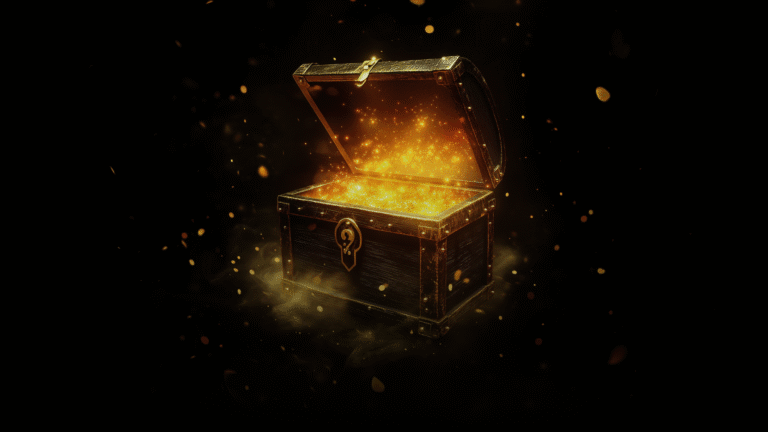
How to Use AI for Writing Smarter and Faster
Answer honestly: is writing fun or tedious? Writing blog posts, novels, marketing copy, or research papers is often a process of brainstorming, structuring ideas, and finalizing drafts. And sometimes that can take hours or even days (or years…). But what if you could write stronger and faster without losing any flexibility or creativity?
This isn’t about shortcuts. This is about efficiency. About writing better without the struggle. So, how to use AI for writing?
What is AI Writing and How Does It Work?
Hemingway had his typewriter. Orwell had his notebook. You? You have AI. A tool that never tires, never doubts, and never second-guesses. It generates ideas, refines structure, polishes prose. The trick is to know how to use AI to write a story and let do part of the work. The trick is to steer it, push it where you need it, and let it elevate what you already do best.
But like, how does it function?AI writing tools (like ChatGPT, Jasper, and Copy.ai) use natural language processing (NLP) and machine learning models that are trained on a ton of text data.
These models look for patterns in language, understand context, and react in a way that resembles a person. Some, like GPT-4, are trained on trillions of words, so they can produce everything from casual social media captions to detailed technical articles.
And many already use it. Some numbers:
- Around 58% of companies that use generative AI do so for content creation.
- Bloggers who use AI spend about 30% less time writing blog posts.
- The AI market for writing assistant software was valued at $1.7 billion in 2023. Experts predict growth at a huge rate: around 25% CAGR from 2024 to 2032.
AI writing isn’t just a futuristic concept. It’s a reality. People who learn to use it effectively will have a big advantage.
How to Make AI Write a Story Effectively?
If you simply tell AI to “write a fantasy story,” you’ll get something generic. The rule: use it strategically.
Tip 1. Start with a Strong Prompt
AI is only as sophisticated as the instructions you give it. Instead of saying, “Write me a fantasy story,” try:
“Write a [amount of word] [genre] story about [a logline]. The tone should be [describe tone and characters].”
If you write your instructions more precisely, the AI will understand you a lot better.
Tip 2. Use AI for Structure, Not Just Text
AI can help you plan your story before you start writing. Ask it to:
- Generate a story map with key events.
- Suggest some backstories (no overload with details, write short and understandable) and character personality traits.
- Give the details about the world/lore: often there are magical systems, political structures, or cultural traditions.
Tip 3. Edit and Refine the AI’s Output
AI-generated text often needs tweaking. Once AI produces a draft, read it critically. Does the dialogue sound natural? If not, rewrite it to feel more human.
Are there clichés? AI sometimes relies on well-known tropes. Break away from them.
Does the story flow well? Rearrange or rewrite sections as needed.
How to Write a Story with AI?
There are two main ways to use AI for storytelling.
You can choose a specialized AI story generator (like Talefy) and go beyond simple text generation, offering structured storytelling features.
|
How It Works: |
If you enter the genre, theme, and key details, the AI will create a text. Many AI story tools suggest character traits, backstories, and motivations to make your cast more realistic. These tools often include built-in style suggestions to enhance flow and coherence. |
|
Best For: |
Writers who want a fast and structured way to create long-form stories, novels, or so on. |
|
Pro Tip: |
Even with specialized AI, you could make your input simpler. These tools are original and avoid formulaic results. |
Or you can choose general AI tools to see how to write a story with AI. If you’re not interested in storytelling AI, you can still outsource your writing to tools like ChatGPT or Claude. They’re more like brainstorming and editing assistants, not full-on story generators.
|
How It Works: |
Use AI to source story ideas, plot twists, or character arcs. AI can also generate prompts, check your grammar, style, and flow, and recommend rewrites in some moments. |
|
Best For: |
Writers who prefer full creative control but want AI to speed up brainstorming, drafting, and editing. |
|
Pro Tip: |
Have a debate with AI. Let it challenge your ideas, suggest alternatives, and offer fresh perspectives. |
Best AI Tools for Writing in 2025
Since AI writing tools are always changing, it’s pretty hard to pick just one “best” tool. What’s great for a novelist might not work so well for a blogger, and an editor’s favorite tool isn’t always the best for creative storytelling. So, there’s no picking a single winner, but a look at the top AI tools for different wants.
1. Best AI Tool for Fiction Writers – Talefy
Talefy is the perfect AI tool for fiction authors. It’s not like those standard text generators. It’s built for storytelling, helping writers create narratives that feel fun and relatable.
Have you tried out Talefy? No? Some words on how to get AI to write a story with Talefy:
- It’s all about the interactive experience. With this tool, you can totally let your creativity run wild and make unique storylines, develop rich characters, and explore all these dynamic worlds.
- It’s got genre-specific support too: sci-fi, fantasy, thrillers, romance, and so on.
- Readers can influence the direction of AI-generated stories, making Talefy ideal for game-like narratives.
- No installation. Just quick registration and free access to the first stories as a gift.
2. Best AI Tool for Blog & Article Writing – Jasper
Jasper AI is a tool you can’t do without. It’s set up to produce blog posts, SEO-optimized articles, and marketing content, and it can adapt to whatever tone you require, like casual, professional, or persuasive.
And more: you’ll find pre-built structures for listicles, how-to guides, and long-form content that’ll make writing faster and easier.
3. Best AI Tool for Editing & Proofreading – Grammarly
Even the best writers need an editor, and Grammarly is the gold standard. It polishes your work with advanced grammar, clarity, and tone adjustments. Also, it’s got plagiarism and AI detection. And with the latest updates from Google and academic rules, it could be a must for bloggers, journalists, and students to prove their content is original.
Common Mistakes to Avoid With AI
It’s always good to be aware of the common mistakes that can sabotage your work. Here are some issues to watch out for:
Overloading Prompts with Excessive Information
Mistake: Give the AI too much information or overly complex instructions in one go.
Consequence: The AI may become confused, leading to disjointed or off-target content.
Solution: Break down complex instructions into simpler, more manageable prompts. Address one aspect at a time to guide the AI effectively and maintain clarity in the generated content.
Failing to Experiment with Different AI Models
Mistake: Using a single AI model for all writing tasks without exploring alternatives.
Consequence: You can skip the better models for certain tasks, which could lead to content quality that’s not up to par.
Solution: Give different AI tools and models a try and see which ones work in your case. Each model has its own tricks, so you can use one for creative writing, technical content, or conversational pieces.
Neglecting to Train or Customize the AI
Mistake: Using AI tools without tailoring them to your specific needs or industry.
Consequence: The output may be too generic and not reflective of your unique requirements or audience expectations.
Solution: Put some time into training the AI with your content, style guides, and industry-specific info. A lot of AI platforms let you customize them, which helps the tool learn and copy your writing style and terminology.
Ignoring Ethical Issues and Plagiarism
Mistake: Using AI to automatically create content without detecting originality or ethically unacceptable.
Consequence: There’s a risk of getting plagiarized content or material that doesn’t follow ethical standards. This could damage your credibility (legal issues, people’s trust).
Solution: A friendly reminder to use plagiarism detection tools. Monitor the industry’s ethical guidelines and make sure that your use of AI follows these standards. Being transparent about AI’s role in content creation can also make your audience trust you more.
Future of AI in Writing and Content Creation
So, where’s all this AI writing magic headed? So, if you’ve ever asked yourself about how to get an AI to write a story that doesn’t come across as, well, a robotic voice, the future looks hopeful.
AI tools, especially the more specialized ones like Talefy, are getting better at figuring out creativity, tone, and those storytelling nuances.



